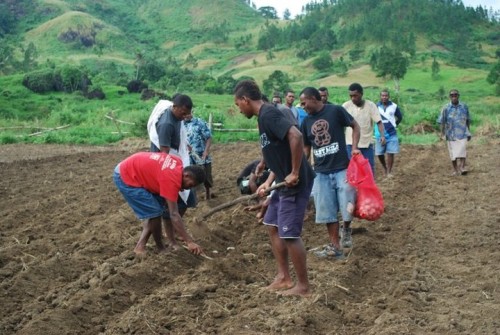The Food and Agriculture Organisation (FAO) said natural disasters cost the agricultural sectors of developing country economies a staggering $96 billion in damages to crop and livestock production.

The report, titled: “The impact of disasters and crises on agriculture and food security”, also said poor farmers in developing countries bore the brunt of the losses.
A quarter of all financial losses caused by natural disasters between 2005 and 2015 were borne by the agricultural sector, according to FAO’s study.
A crowded field of threats that includes drought, floods, animal disease outbreaks and chemical spills were among the disasters costing farmers in the developing world billions of dollars each year, it said.
The report, launched in collaboration with FAO, Vietnam, at a regional conference in Hanoi, said drought, which had battered farmers globally, was one of the leading culprits.
According to FAO document, 83 per cent of all drought-caused economic losses were absorbed by agriculture to the tune of $29 billion.
“This has become the ‘new normal,’ and the impact of climate change will further exacerbate these threats and challenges,” José da Silva, Director-General of FAO, warned.
The report also detailed how multiple other threats were taking a heavy toll on food production, food security, and people’s livelihoods.
“For both Africa as well as for Latin America and the Caribbean, drought was the costliest disaster, resulting in crop and livestock losses of $10.7 billion and $13 billion, respectively, between 2005 and 2015.
“African farmers notched up more than six billion dollars in losses in that period from crop pests and animal diseases, according to the report.
“Small island developing States were particularly vulnerable to tsunamis, earthquakes, storms and floods as their economic losses from disasters jumped from $8.8 billion for the period 2000 to 2007, to over $14 billion between 2008 to 2015,” the report showed.
In Syria, the report found that the overall financial cost of damage and loss in that country’s agriculture sector over the 2011 to 2016 period was at least $16 billion.
“The agriculture sectors – which includes crop and livestock production as well as forestry, fisheries and aquaculture – face many risks, such as climate and market volatility, pests and diseases, extreme weather events, and an ever-increasing number of protracted crises and conflicts,” da Silva said.
Given the increasing scale and intensity of threats to agriculture, the report noted that it was critical to develop adequate disaster and crisis governance structures, which must be grounded on data and evidence detailing the ways that disasters affected farmers and food producers.
“Building a more holistic and ambitious disaster-resilience framework for agriculture is crucial to ensuring sustainable development, which is a cornerstone for peace and the basis for adaptation to climate change,” da Silva emphasised.
By Prudence Arobani
